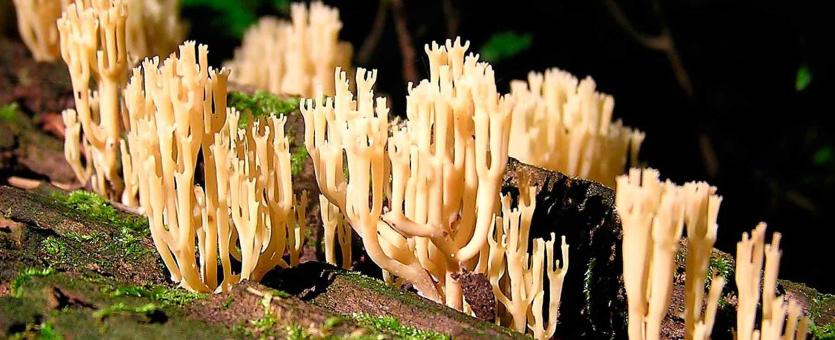
Many-branched, coral-like mushroom; yellowish tan with crownlike tips. Grows on dead wood. June–September. Fruiting body branched, with crownlike tips; yellowish, becoming tannish or pinkish; texture tough; with a very short, thin stalk. Spore print white. Spores magnified elliptical, smooth, colorless.
Lookalikes: Other species of coral mushrooms, some of which may cause gastrointestinal upset. Important clues for identifying a crown-tipped coral are: It is one of the few corals that grow on wood; if you take a tiny taste, it will be peppery; and the tips are crownlike, like the pinnacles of a tiny castle.
Fruiting body width: ¾–2½ inches; height: 2–5 inches.
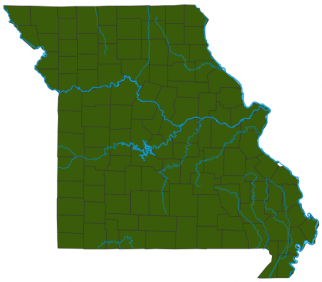
Statewide.
Habitat and Conservation
Grows singly or in groups of up to several on the dead wood of deciduous trees.
Status
Edible—with caution. This and other coral mushrooms may cause gastrointestinal upset.
Life Cycle
This species exists as a network of fungal cells (mycelium) within rotting wood. The mycelium obtains nourishment by digesting, and rotting, the wood. When ready to reproduce, the mycelium develops the branching "fruiting body" outside the wood, which is a reproductive structure. Spores are produced on the branches and are released to begin new mycelia elsewhere. The mycelium can live for decades.
Human Connections
Humans have eaten mushrooms for millennia, and mushroom hunting is fun and rewarding. When eating a wild mushroom for the first time, it is a good idea to sample only a small amount at first, since some people are simply allergic to chemicals in certain fungi. Make sure they are cooked, too.
Ecosystem Connections
This is one of the many fungus species that live on decaying wood. It and other such saprobic fungi play an incredibly important role in breaking down the tough materials wood is made of and returning those nutrients to the soil.
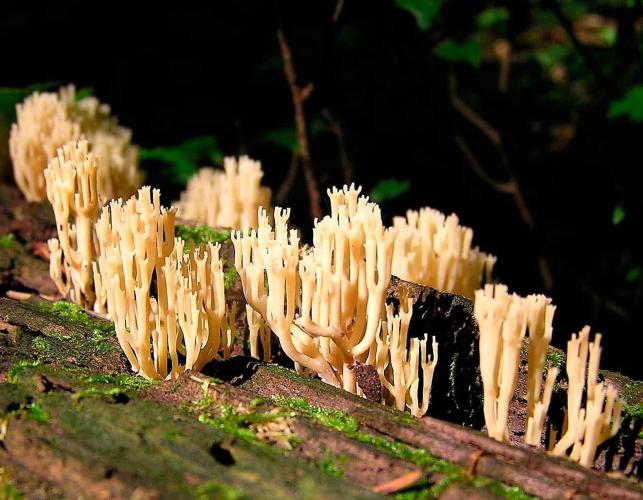
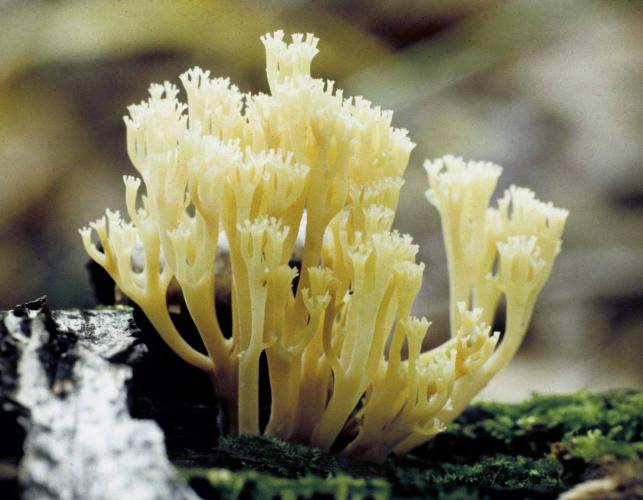
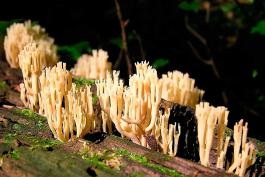
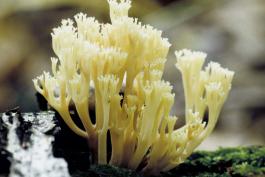
Mushrooms are a lot like plants, but they lack chlorophyll and have to take nutrients from other materials. Mushrooms are neither plants nor animals. They are in a different kingdom — the fungi. Fungi include the familiar mushroom-forming species, plus the yeasts, molds, smuts, and rusts.
Always be cautious when eating edible mushrooms. Be absolutely sure of the ID, and only eat a small amount the first time you try it to avoid a reaction..





















